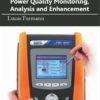By powering millions of homes and businesses, renewable energy is reducing the threat of climate change and making the air safer to breathe. Wind farms have become a familiar part of the landscape, and solar panels have spread across rooftops nationwide. Yet we have only begun to tap the potential of clean energy alternatives. Energy exists freely in nature. Some of them exist infinitely (never run out, called renewable), the rest have finite amounts (they took millions of years to form, and will run out one day, called non-renewable. There are many forms of renewable energy which includes Biomass, Wind, Hydropower, Geothermal and Solar sources. Renewable energy can be converted to electricity, which is stored and transported to our homes for use. Most of these renewable energies depend in one way or another on sunlight. Wind and hydroelectric power are the direct result of differential heating of the Earth’s surface which leads to air moving about (wind) and precipitation forming as the air is lifted. Solar energy is the direct conversion of sunlight using panels or collectors.
Biomass energy is stored sunlight contained in plants. Other renewable energies that do not depend on sunlight are geothermal energy, which is a result of radioactive decay in the crust combined with the original heat of accreting the Earth, and tidal energy, which is a conversion of gravitational energy. The book entitled New Developments in Renewable Energy seeks to promote and disseminate knowledge on the various topics and technologies of renewable energy systems and components. The book aims to serve researchers, engineers, economists, manufacturers, NGOs, associations and societies to help them keep abreast of new developments in their professional fields and to put on unconventional energy solutions to current practices.













